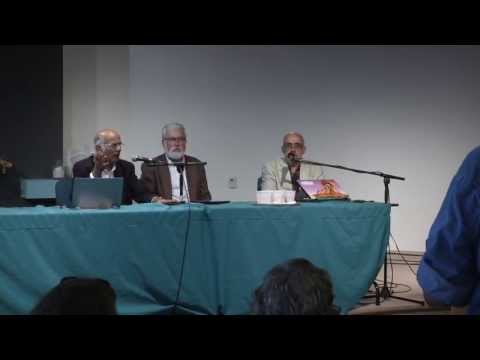The NRC Waste Confidence GEIS is No Excuse for Leaving Dangerous Nuclear Waste at Closed Nuclear Plants
Sierra Club letter to the NRC, Dec. 13. 2013
We appreciate the opportunity to comment on the above proposed regulation, known as the Waste Confidence Generic Impact Statement.
In our comments below, we present two major lines of concern:
(1) While the EIS framework has a long history in addressing environmental impacts, it may be inappropriate for risk assessment of spent nuclear fuel hazards over decades. Thus, even the most thorough EIS could be irrelevant to the critical issues at hand.
(2) The findings of the GEIS appear to seriously understate (a) generic levels of risk in storing spent nuclear fuel on-site at decommissioned reactors; (b) specific risk factors arising from characteristics of specific sites; (c) risk differentials of long-term or indefinite storage on-site rather than at a remote geologic repository; (d) added risks of on-site storage created by the use of high burn-up fuel.
Read and Print the entire letter
Community Symposium on Decommissioning San Onofre
6 videos
READ SUMMARY OF REMARKS BY SYMPOSIUM SPEAKERS
Saturday, October 19, 2013, 1:30 - 4:30 p.m.
Center for Spiritual Living,1201 Puerta Del Sol, Suite 100, San Clemente, CA 92673
In June, civic and environmental activists won a big victory when the troubled San Onofre nuclear plant ceased operations permanently. The current dispute over defective technology between Edison and Mitsubishi confirms how necessary this outcome was.
Environmental and citizen groups had only a short time to celebrate averting the risk posed by continued operation of the plant. Almost immediately it became clear that this site, wedged between Interstate 5 and the Pacific shoreline, poses a huge challenge of radioactive nuclear waste stored at the plant.
The issues are multiple. Much of the waste is a highly radioactive form of spent fuel known as “high burn-up,” stored in densities far higher than original design specifications. Large uncertainties persist about where the waste will ultimately be stored and for how long. Billions of dollars of expense will be required to resolve these uncertainties. The issues involved in “decommissioning” San Onofre were secondary during the shutdown debate but now they loom large.
On Saturday, October 19, in San Clemente, the Community Symposium on Decommissioning San Onofre featured nationally regarded authorities addressing these concerns:
Dr. Arjun Makhijani, expert on Hardened On Site Storage of nuclear waste and long-term high-level waste management issues and President of the Institute for Energy and Environmental Research
Dr. Marvin Resnikoff, expert on nuclear waste management issues and Senior Associate at Radioactive Waste Management Associates
Dr. Donald Mosier, expert on the health effects of radiation, Department of Immunology at The Scripps Research Institute and City Council member from Del Mar, California
Co-sponsors of the symposium include Residents Organized for a Safe Environment (ROSE), Sierra Club Angeles Chapter, Peace Resource Center of San Diego, San Clemente Green, Women's Occupy, Citizens Oversight Project, and San Onofre Safety.
Our immediate goal is to assure that "best practices" are applied to make the decommissioning of San Onofre as safe as possible.
Our ultimate goal is to rejuvenate the national dialog about how the U.S. manages nuclear waste.
NRC Hearing on Decommissioning San Onofre
The U.S. Nuclear Regulatory Commission held a local hearing about decommissioning the San Onofre nuclear plant on September 26, 2013, in Carlsbad, California.
Summary of U.S. Nuclear Regulatory Commission Presentations (pdf download 345 KB)
on the NRC’s Power Reactor Decommissioning Process for the
San Onofre Nuclear Power Plant
Summary Highlights of Questions and Responses (pdf download 286 KB)
U.S. Nuclear Regulatory Commission
Hearing on Decommissioning San Onofre
All information provided in the documents above was compiled by Glenn Pascall, Chair, San Onofre Task Force, Sierra Club Angeles Chapter, from materials and comments provided by NRC officials attending the hearing on Sept. 26, 2013. These notes are provided for public review only and have been prepared with the best information available to the activists working with the San Onofre Task Force.
NRC meeting in SoCal on Feb. 12
Glenn Pascall spoke at the NRC meeting in SoCal regarding the failed San Onofre Nuclear Generators. Click to read his detailed program and speaker notes including his statement.
WHEN: Feb 12 at 6 pm
WHERE: Capo Beach Church, 25975 Domingo Ave. Capistrano Beach, CA 92624
WHAT: NRC MEETING NOTICE AND AGENDA
WEBCAST: This meeting will be made available via public webcast at https://video.nrc.gov.
Questions or comments regarding San Onofre Nuclear Generating Station can be submitted at any time to OPA4@nrc.gov.
San Onofre Discussion with Allison MacFarlane - Jan. 14, 2013
Chair of the U.S. Nuclear Regulatory Commission,San Juan Capistrano, California
Chairperson MacFarlane led a delegation of five NRC officers and staff including Greg Warnick, senior NRC inspector on-site at San Onofre and Nathan San Filipo, NRC senior advisor.
The meeting was organized by Gene Stone of ROSE, and included Glenn Pascall, Chair of the Sierra Club Angeles Chapter Task Force on San Onofre.
• Radiation monitoring
• Steam generator monitoring
• Emergency preparedness
• Earthquake vulnerability
• Plant safety violations
• Transparency of NRC process
• Transparency of information
• Decision-making silos
A meeting summary is available for review.





